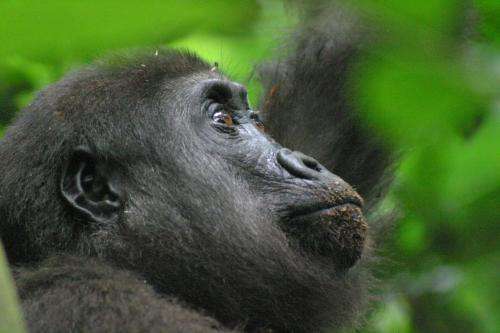New park protects 15,000 gorillas

The Republic of Congo has declared a new national park that protects a core population of the 125,000 western lowland gorillas discovered by WCS in 2008.
Called Ntokou-Pikounda National Park, the new protected area spans some 4,572 square kilometers (1,765 square miles) and contains an estimated 15,000 gorillas, 800 elephants, and 950 chimpanzees. The new park adds to Congo's impressive list of protected areas that safeguard large populations of gorillas and wide expanses of pristine habitat.
"The Republic of Congo has shown the world its commitment to protect the largest population of gorillas on the planet," said WCS President and CEO Cristián Samper. "We commend the Congolese government for its leadership and foresight to set aside lands so that wildlife can flourish."
The park was created on December 28 when the Congolese Ministerial Council, presided by Republic of Congo President Denis Sassou Nguesso, adopted the "Decree Establishing the Ntokou-Pikounda National Park."
Claude Massimba, Republic of Congo's Director of Wildlife and Protected Areas from the Ministry of Forest Economy and Sustainable Development, said: "The creation of this new protected area is part of our policy of conservation and sustainable management of the most representative ecosystems in the country. This is an important event that has extended the number of protected areas of Congo occupying now more than 11 percent of the national territory."
John Robinson, WCS Executive Vice President for Conservation and Science, said: "The Congolese government has been an extraordinary conservation partner with WCS for many years. This new park is wonderful news for gorillas and for conservation in Central Africa."
Ntokou-Pikounda National Park joins other protected areas in the region, including Nouabalé-Ndoki National Park and Odzala-Kokou National Park. The new park contains a gorilla-rich remote swamp dubbed the "Green Abyss" by WCS researchers who conducted wildlife surveys there.
In 2008, WCS announced the discovery of more than 125,000 western lowland gorillas in northern Republic of Congo. Following that discovery, the Congolese government pledged its commitment to protect the Ntokou-Pikounda landscape with an eventual national park.
Across Central Africa, gorillas face the looming threats of hunting for bushmeat and the spread of the Ebola virus, which is lethal to gorillas as well as humans. WCS is working with partners to combat Ebola, find alternative sources of food for people, and secure this last stronghold for Africa's apes.
Western lowland gorillas are one of four recognized gorilla sub-species, which also include mountain gorillas, eastern lowland gorillas, and Cross River gorillas. All are classified as "critically endangered" by the IUCN, except eastern lowland gorillas, which are endangered. The Wildlife Conservation Society works to safeguard all four subspecies.
To draw attention to the plight of the greater Congo Basin rainforest, WCS's Bronx Zoo opened the Congo Gorilla Forest exhibit in 1999. Since then, the exhibit has raised millions of dollars from its admission fee for WCS conservation work in Central Africa.
Provided by Wildlife Conservation Society



















